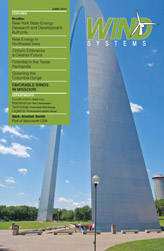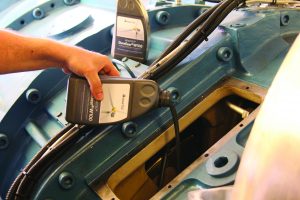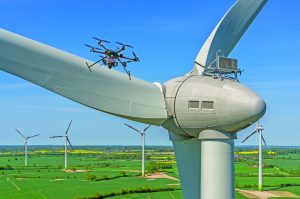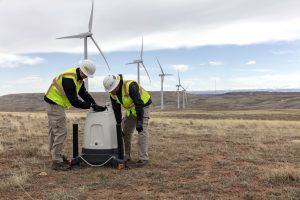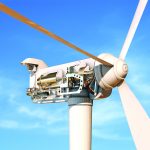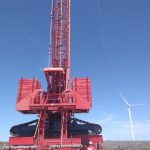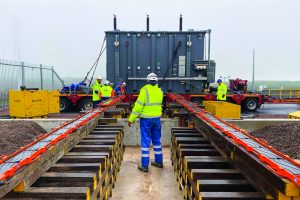Inbound supply chains are becoming increasingly complex. While many OEM turbine manufacturers have or are planning North American assembly plants, most new plants are being designed to use rail for outbound deliveries. For some components, such as towers, the lowest total landed cost of the component may mean sourcing products from overseas and shipping in bulk via ocean vessel and transloading to rail. When products are consolidated and moved in mass, risk can be reduced through easier tracking and increased assurance that all product will arrive together. On the other hand, when components are moved en masse inventory accumulates. In all cases, the final movement for the component is done by truck to the wind farm. At the very least, wind farms must have an inventory collection point near the wind farm so that final deliveries can be coordinated based on the construction schedule. Logistics managers must understand the various site selection tradeoffs to determine the most appropriate inventory pre-staging areas.
Location is a key selection criterion, and generally it is best to select an inventory pre-staging site closest to the final destination to ensure economical truck shuttle deliveries. Distance to the wind farm is not the only consideration, however, and it may make sense to locate a pre-staging area farther from the wind farm if the site has other key criteria, including infrastructure, suitable land, access to transportation infrastructure, reduced seasonal restrictions, and reduced delivery complexity.
All pre-staging sites will need cranes to transload product from one conveyance to the next. Ideally it is best to share cranes with another operation to save both cost and time. For example, established ocean port and rail transload facilities may have cranes suitable for wind components. On the other hand, locations with established infrastructure may be too far away from the wind farm to consider as a final pre-staging area and may only be suitable for part of the delivery cycle. A second possibility is sharing private infrastructure with another counter-cyclical organization. For instance, a company or a group of companies in a logistics park that move large bulky products such as scrap yards or manufacturing operations for dimensional products. In some cases, access to rail infrastructure may be possible but cranes are unavailable. Cranes may need to be mobilized and demobilized on a project-by-project basis, but at a higher cost.
Another key criterion is available and suitable land, including space for a component laydown area, a maintenance area, and enough room to move cranes and trucks with ease. Land must be graded, and compacted to absorb the weight of the components. Ports and rail transload sites generally have land at or nearby the facility, but availability of land is subject to business cycles. Also, land costs at ports tend to be higher relative to other land costs. Some railroads have identified a need to help wind companies pre-stage inventory for project sites and have opened up strategically located sites to be used by multiple wind companies. These sites offer general proximity to the “wind belt,” access to rail infrastructure, and land. In many cases each participating company outfits their own cranes.
It is critical that any pre-staging area has access and ability to utilize transportation infrastructure. For instance, some ports such as Houston and Duluth have the capability to transload products from ocean vessels to rail cars, increasing efficiency and lowering costs. Any final staging area will need to efficiently flow product to the final site using roadways. Entrances to and from the staging area must be free of obstruction and the site must have easy access to roadways that can handle dimensional cargo.
In some cases, seasonal restrictions limit travel. For instance, the inland waterways are restricted by season and by the height of the water. Many northern ports close during the winter months. Public roadways in some northern states, such as Michigan, are restricted during frost season. North Dakota limits use of roadways when the ambient temperature exceeds 82 degrees. It is important to understand limitations so that delivery schedules can be planned.
For dimensional loads, all states require permits. The rules and requirements vary by state. If components are pre-staged in a nearby location, it may be possible to negotiate consolidated permits. For instance, a state may issue an open permit for a volume of similar loads to be delivered during a specified time. Streamlined permitting increases administration efficiency and can reduce costs. It is more likely that consolidated permits can be obtained if travel is within a single state. Therefore, an inventory consolidation location within 10 miles of the project site but across a state border may be more complicated, less cost effective, and more difficult to permit than a consolidation site located 100 miles from the project site but within a single state.
Determining the most appropriate sites for transloading and pre-staging inventories requires careful consideration of competing priorities. Each project has different needs, and the cost benefits of potential locations need to be systematically balanced against costs and risk.
















